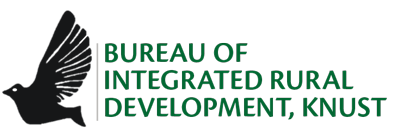A number of studies on spatial dynamics of land use change have shown declining levels of green spaces and water infrastructure and excessive pressure on these resources threatens sustainability and achieving the 2030 Sustainable Development Goals (SDGs) on food, water, climate and biodiversity. This changing nature of the Kumasi landscape raises important questions. For example, as the world strive to achieve the SDGs, what would the Greater Kumasi Metropolitan Area (GKMA) look like in 2030? Why and how should green and blue infrastructure of the GKMA be conserved? What strategies will work and how should different stakeholders collaborate to conserve green and blue infrastructure? These are important questions that require multi-actor and multi-stakeholder forum to explore the challenges and strategies for inclusive development planning in the Kumasi landscape. This project, which started in 2021, was intended to map out different stakeholders and interests operating in the fields of (peri-) urban planning, agriculture, forestry and conservation in the Kumasi landscape. The goal was to identify strategies and shared stakeholder ambitions for the Kumasi landscape, which will be translated into visualised future development narratives and scenarios, in relation to the Sustainable Development Goals for food, water, climate and biodiversity by the year 2030. The project is being implemented in partnership with PBL Netherlands Environmental Assessment Agency. A key finding of the study was that the GKMA is experiencing massive population growth and the outer rings (peri-urban areas) have seen increased demand for land for various development activities. This has significantly reduced opportunities for local people to sustain their livelihoods resulting in increased despondency, especially among the youth who have little or no skills to compete for jobs outside agriculture. Environmental degradation has become a major challenge in the area; riverine areas, wetlands and the few remaining forest patches have all come under serious threat. The study recommended an inter-sectorial collaboration to develop shared and implementable scenarios that can tackle joblessness, increased crime rate, and environmental degradation in the GKMA
LANDSCAPE PLANNING AND GOVERNANCE OF GREATER KUMASI
Period:
2022
to
2023
| Unit:
Environment and Sustainable Development Unit (EnSuD)
Project Team

Prof. (Nana) Paul Sarfo-Mensah

Dr. Albert Arhin

Mr. Nathaniel Mensah-Odum
Johan Meijer
Like Bijlsma of PBL
The Netherlands Environmental Development Agency
